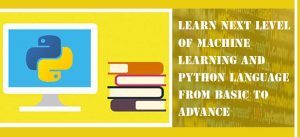Post Contents
When a group of a certain number of related instructions are used together is called as functional in Python programming language. They are a reusable block of codes which are used to perform a specific task. functions are executed only to perform a specific task and they are specially called. Depending upon the task, it may carry out return value.
Including functions in a program helps to make it more organized and manageable. Especially, while working on a large program, having small code block can increase the readability of the code along with it improving the final results.
Defining functions in python
There are some set of rules which need to follow while defining a function:
- Def keyword is used to initiate the function.
- Def keyword is followed by a name of a function which is further followed by () containing the statement passed by the user and “:” is used at the end.
- After putting the colon, the body function starts with an intended block in a new line.
- The argument having a return statement sends a result object back to its caller and a return statement with no argument is equivalent to the return non-statement.
Syntex for writing a function in python programing
def (arg1, arg2, … argN):
return
Go ahead with you career by joining python course in Delhi provided by industry experts
How to call a function in python
Defining a function isn’t all we have to do so as to start utilizing it in our program. Defining a function just structures the code blocks and gives the function a name. To execute a function, we have to call it. Just when it is specifically called, a function will execute and give the necessary yield. Presently, there are two ways in which we can call a function after we have characterized it. We can either call it from another function or we can call it from the Python prompt.
Example
# defining a function
def printOutput( str):
#This function will print the passed string
print (str)
return;
#calling a function
Print output(“Welcome to AIDM”)
Output:
Welcome to AIDM
How to add Docstring in a Python Functions
The first statement or string in any Python function (optional statement) is called a docstring. It is utilized to quickly and freshly portray what a function does. ‘Docstring’ is the abbreviation for ‘documentation string’.
Despite the fact that remembering a docstring for our function is optional, it is viewed as a decent practise as it increases the readability of the code and makes it easy to understand. We utilize triple statements around the string to write a docstring. A docstring can also reach out up to numerous lines.
Boost your career as a python developer by joining the best python training institute in Delhi.
Join our online & offline java training institute in delhi and android app development course for beginners to become an expert in this field.
Example:
In the example accommodated calling a function, we utilized a remark to depict what the function would do. We will do likewise in this example as well. Just that, we will utilize a docstring here to show what the function will do.
# defining a function
def print output( str):
“’ This function will print the passed string’”
print (str)
return;
#calling a function
Print output(“Welcome to AIDM”)
Output:
Welcome to AIDM
The extent of a variable is a piece of the program where the variable is unmistakable.
As we have just talked about nearby and global variables in the Python Variables module of this instructional exercise, we realize that the variables characterized inside a function just have a neighbourhood scope. Which means, the variable characterized inside a function is just unmistakable inside that function.
It will be good if you learn Data Science course in delhi yourself by joining the Django training in delhi
def func():
x = 5
print(“value of x inside the function”, x)
#calling the function
x = 10
func()
print(“value of x outside the function”, x)
Output:
value of x inside the function 5
value of x outside the function 10
The lifetime of a variable is the timespan until when the variable exists in the memory. Variables characterized inside the function just exist as long as the function is being executed. Thus, the lifetime of a variable characterized inside a function closes when we come back from the function or when the control comes out of the function.
We have given a brief of the information about the function in python programming language. If you are still hungry to learn more, you can join our Python tutorial for beginners which is also available online.
For getting certified and having the best career growth, look at our Python training institute in Laxmi Nagar Delhi.
Recommended blog:

- Number system, random module, math library, decimal in the python programming language
- Variable and datatypes work and behaviours in python language
- Python setup and a basic understanding of python language
- How to use casting and string in python
- Use of Boolean Datatype and Python Operators
- Use case of the tuple in python difference between list and tuple
- Python Sets And Dictionaries Python Lists, Python Sets & Dictionary
- Difference Between For and While Loop In Python
- What Are The 3 Types Of Loops In Python For Loop In Python With Condition







